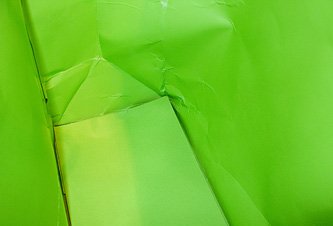Grygar's Axiom of Infinity
Yes, nowadays, we must get used to the existence of alternative spaces and times. Owing to the technology that allows us to project scenes comparable in their factuality at least to the scenes that we perceive through our senses, we are forced to philosophize in the correspondingly alternative manner.[...] As non-virtual reality does not exist because reality is only a borderline concept we have been approaching without being able to achieve it once and for all, I can talk about alternative ways of achieving reality. It is achievable in technological as well as theoretical terms. A number of theoretical reflections may be said to deal with alternative realities.
Vilém Flusser
Even though the exhibition in the Školská Gallery is presenting three current collections by photographer Štěpán Grygar, their resources naturally dwell in the entire context of his existing work. Let us therefore remind ourselves that Grygar's works were nearly completely characterized in many texts written on them in the past. For example that they are purely creative graphic photographs of unusual beauty, the source of which is the author's extraordinarily individual sensitivity to visual values of reality (Dufek,1984); that the author applies the method of "shifting" in photography, i.e. makes the time aspect visible in photography (Primus, 1991); that a motive repeated in a multiple manner also and especially creates a new, autonomous flow of time (Moucha, 1993); that snow, so much favoured by Grygar, was described as his striving for pure aesthetics, getting hold of a passing moment of innocence, emphasizing its unseizable nature (Primus, 1997). It was also stated that, in his case, they are the works arising from a solitaire and heading for contemporary post-conceptual series without resigning the optical clarity of core elements (Moucha, 2001); among others, there were also highlighted literary connotations (Janata, 1992); refinement (Dufek, 1997), receptiveness (Hlaváčková, 2006) and his family as well as Czech avant-garde traditions and the amalgamation of the conceptual and post-constructivistic reflection of the photographic medium (Vančát, 2006). The author himself also makes his own contributions in the form of occasional comments.
How to continue these statements? We may add there have been equipollently co-existing two approaches in Grygar's work at least since the beginning of the 1990s. To put it simply, one which is based on "pure" photography symbolized by pictures such as Mikulášský anděl (The Angel of St. Nicholas Day) taken in a snow-covered street, and the other based on conceptual thinking, i.e. the series such as Planeta (Planet) or How do you feel today. In the first one, we as if feel an echo of the surrealistic poetics or a discussion with the Czech imaginative photography tradition, which was instilled with its non-interchangeable form by Josef Sudek. In the other one he builds on post-structural post-modernism (see Collective of authors, Umění po roce 1900 [The Art after 1900], Prague, p. 598), which is turning towards the criticism of representation, creating reality rather than imitating it.
Despite the terminology used in relation to him, Grygar differs from post-modern photographers (as well as "non-photographers" working with photography) in many respects as he rests neither on criticism nor on adoration of objects or symbols of the contemporary society, does not work with triviality, resigns neither his individual recognizable style, nor technical precision of pictures. In this respect, he remains anchored in the modernist approach. And vice versa, what however connects him with the currently prevalent utilization of photography is the application of sequences and series, where every picture is of equivalent value and which suppress the decisive moment, directing it towards any of them. Sequences and their utilization in photography are closely connected with filmmaking, or as Deleuz puts it, they are characterized by a certain fragmentarity (Gilles Deleuze, Film 1. Obraz - Pohyb [Film 1stPicture- Motion]. NFA Prague, 2000). Some of Grygar's photographs from the 1980s already contain this "film-like quality" in its latent form - they are followed up with the current series depicting a hare on a rainy road. It is the fragmentarity that links the three exhibited collections - Green series as well as both Bez názvu [Untitled] ones - together. Another significant factor inherent in them is time (often represented by snow in Grygar's works). If we get back to Deleuz, then the legitimate time in film (hence also in photographic sequences) is the time which is imaginary, changeable. Sequences are open, mobile, generating a number of other images - including those that the author has not exhibited, "just" thinking about them. In his sequences, Grygar oscillates between seemingly separated worlds - the processual and conceptual ones - disrupting the "prescribed" flow of time.
Despite the two-dimensionality of the photographic image, Grygar disposes of a significant sense for plasticity. In his early works he was turning to the basic stereometric structures (sphere, triangle, trapezoid), shifting now, at least in his Green series, to "soft plastic art". Compared to his previous works, he is more concrete in the sense of an object identification (the box), however constructing a new reality with different means, especially colour and light, which give the space nearly a transcendental character. The black-and-white "graphic" series presents highly abstracted pictures of geometric structures, where more importance is attached to their arrangement (a binary relation defined by the authory) and equivalency. At the same time, both above mentioned works make use of spatial relations - the appearance of the watched work changes with every new point of view or an altered stand taken by a viewer. The exhibited pictures or series thus do not have only one appearance, there is an endless number of them. They are the axiom of infinity.
Helena Musilová




